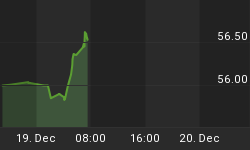Here's an update of the 5 charts shown in my October 21, 2003 communication:
First comes a scatter chart in which the CI-NCI Ratio smoothed by six 10-day moving averages is plotted against the NYSE Trin smoothed by six 10-day moving averages. The time span covers the first 162 trading days after the 4/28/78 and 5/30/03 deep monthly DJIA Coppock Curve buy signals.

Second and third come line charts showing each of the above 2 coordinates separately over the 500 trading days before and after the same 2 signal dates.


Fourth comes the latest update of the Monthly DJIA line chart showing the 24 months before and after the same 2 signals.

Fifth comes a line chart of Peter Eliades' CI-NCI Ratio.

The CI-NCI Ratio has topped. The Six by Ten CI-NCI Ratio still needs about another 20 trading days to reach a top, after which the green path in the above scatter chart can finally start evolving leftward.















